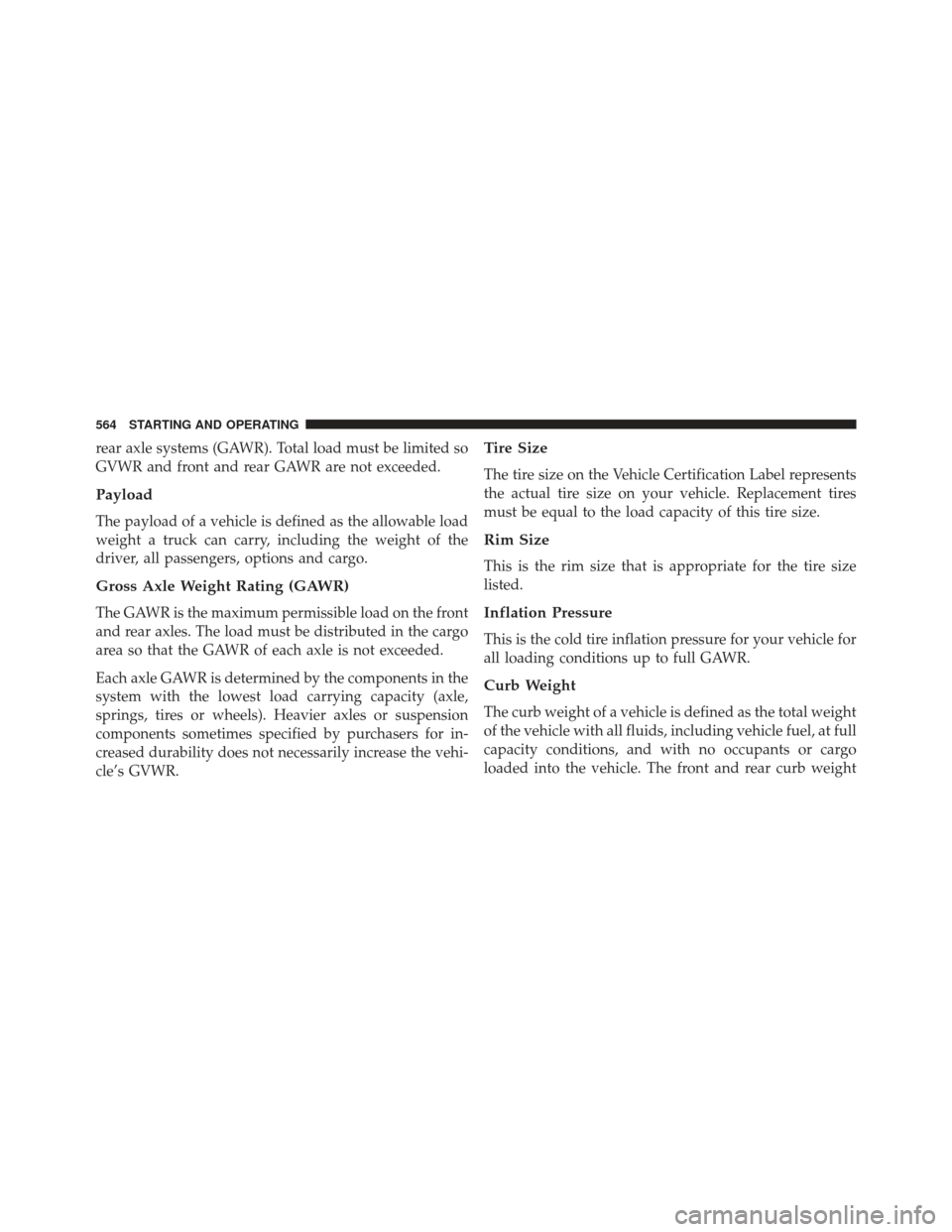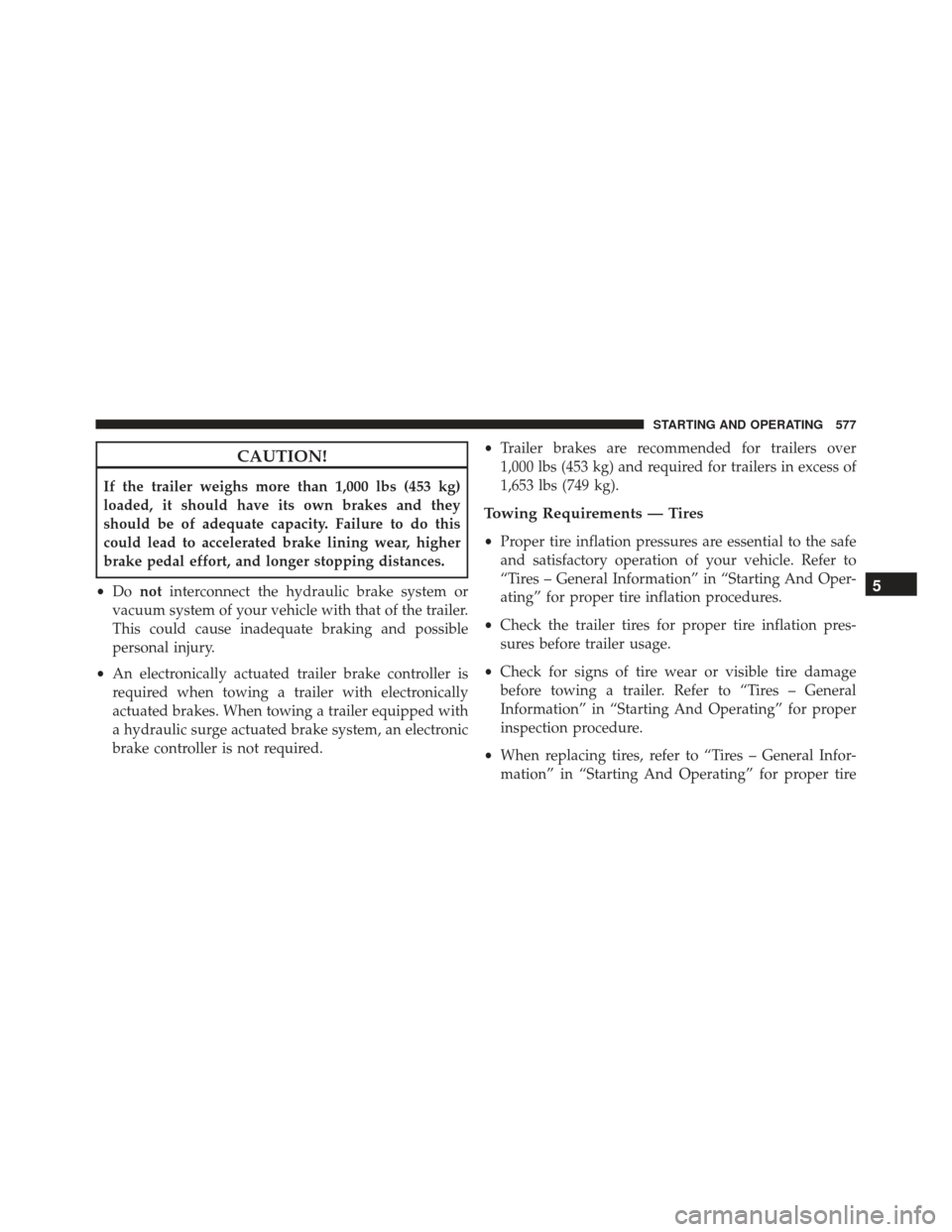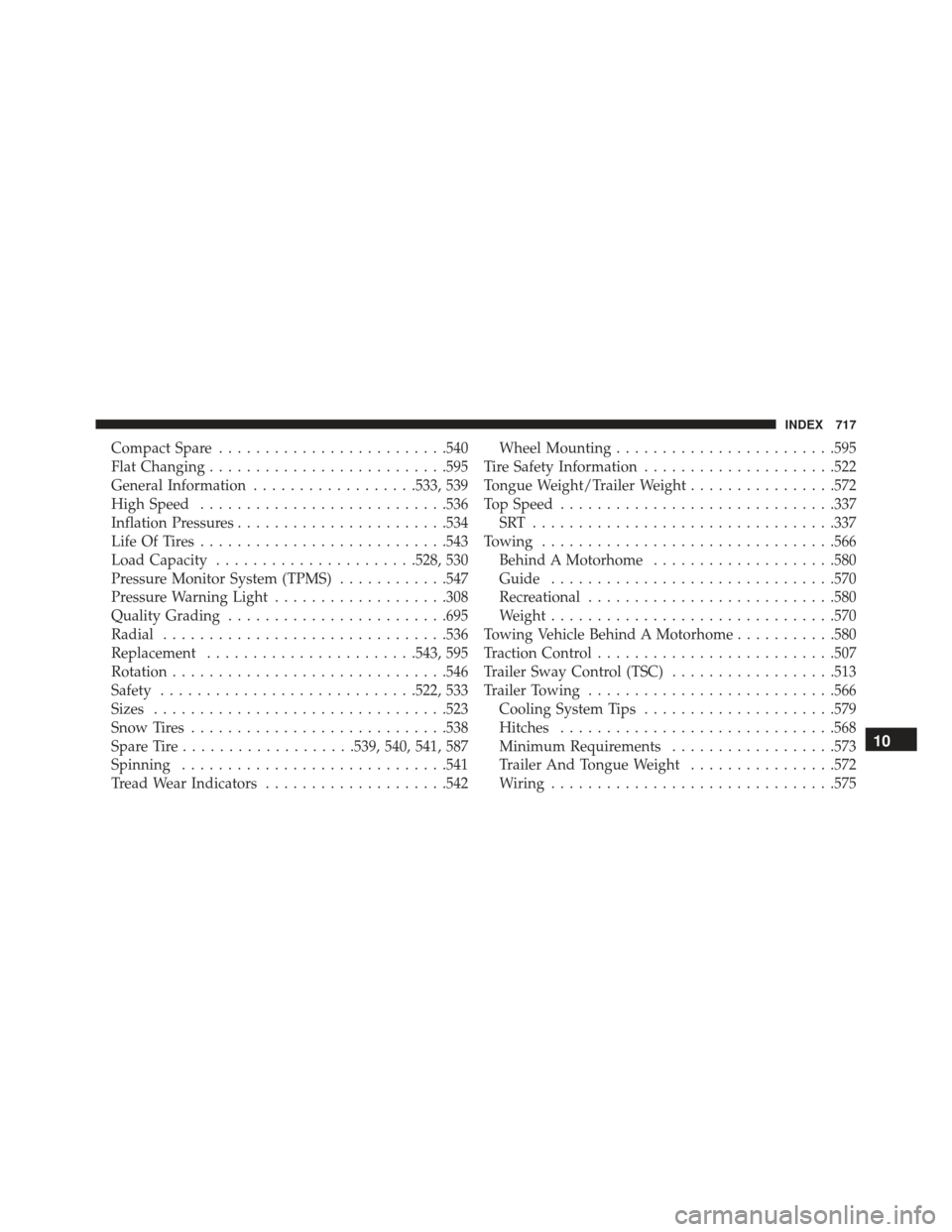Page 552 of 723

•Driving on a significantly under-inflated tire causes
the tire to overheat and can lead to tire failure.
Under-inflation also reduces fuel efficiency and tire
tread life, and may affect the vehicle’s handling and
stopping ability.
• The TPMS is not a substitute for proper tire mainte-
nance, and it is the driver ’s responsibility to maintain
correct tire pressure using an accurate tire gauge, even
if under-inflation has not reached the level to trigger
illumination of the Tire Pressure Monitoring Telltale
Light.
• Seasonal temperature changes will affect tire pressure,
and the TPMS will monitor the actual tire pressure in
the tire.
Premium System
The Tire Pressure Monitor System (TPMS) uses wireless
technology with wheel rim-mounted electronic sensors to monitor tire pressure levels. Sensors, mounted to each
wheel as part of the valve stem, transmit tire pressure
readings to the Receiver Module.
NOTE:
It is particularly important, for you to regularly
check the tire pressure in all of your tires and to maintain
the proper pressure.
Tire Pressure Monitor Display
550 STARTING AND OPERATING
Page 566 of 723

rear axle systems (GAWR). Total load must be limited so
GVWR and front and rear GAWR are not exceeded.
Payload
The payload of a vehicle is defined as the allowable load
weight a truck can carry, including the weight of the
driver, all passengers, options and cargo.
Gross Axle Weight Rating (GAWR)
The GAWR is the maximum permissible load on the front
and rear axles. The load must be distributed in the cargo
area so that the GAWR of each axle is not exceeded.
Each axle GAWR is determined by the components in the
system with the lowest load carrying capacity (axle,
springs, tires or wheels). Heavier axles or suspension
components sometimes specified by purchasers for in-
creased durability does not necessarily increase the vehi-
cle’s GVWR.
Tire Size
The tire size on the Vehicle Certification Label represents
the actual tire size on your vehicle. Replacement tires
must be equal to the load capacity of this tire size.
Rim Size
This is the rim size that is appropriate for the tire size
listed.
Inflation Pressure
This is the cold tire inflation pressure for your vehicle for
all loading conditions up to full GAWR.
Curb Weight
The curb weight of a vehicle is defined as the total weight
of the vehicle with all fluids, including vehicle fuel, at full
capacity conditions, and with no occupants or cargo
loaded into the vehicle. The front and rear curb weight
564 STARTING AND OPERATING
Page 579 of 723

CAUTION!
If the trailer weighs more than 1,000 lbs (453 kg)
loaded, it should have its own brakes and they
should be of adequate capacity. Failure to do this
could lead to accelerated brake lining wear, higher
brake pedal effort, and longer stopping distances.
• Do not interconnect the hydraulic brake system or
vacuum system of your vehicle with that of the trailer.
This could cause inadequate braking and possible
personal injury.
• An electronically actuated trailer brake controller is
required when towing a trailer with electronically
actuated brakes. When towing a trailer equipped with
a hydraulic surge actuated brake system, an electronic
brake controller is not required. •
Trailer brakes are recommended for trailers over
1,000 lbs (453 kg) and required for trailers in excess of
1,653 lbs (749 kg).
Towing Requirements — Tires
• Proper tire inflation pressures are essential to the safe
and satisfactory operation of your vehicle. Refer to
“Tires – General Information” in “Starting And Oper-
ating” for proper tire inflation procedures.
• Check the trailer tires for proper tire inflation pres-
sures before trailer usage.
• Check for signs of tire wear or visible tire damage
before towing a trailer. Refer to “Tires – General
Information” in “Starting And Operating” for proper
inspection procedure.
• When replacing tires, refer to “Tires – General Infor-
mation” in “Starting And Operating” for proper tire
5
STARTING AND OPERATING 577
Page 719 of 723

Compact Spare........................ .540
Flat Changing ......................... .595
General Information ..................533, 539
High Speed .......................... .536
Inflation Pressures ...................... .534
Life Of Tires .......................... .543
Load Capacity ..................... .528, 530
Pressure Monitor System (TPMS) ............547
Pressure Warning Light ...................308
Quality Grading ....................... .695
Radial .............................. .536
Replacement ...................... .543, 595
Rotation ............................. .546
Safety ........................... .522, 533
Sizes ............................... .523
Snow Tires ........................... .538
Spare Tire ...................539, 540, 541, 587
Spinning ............................ .541
Tread Wear Indicators ....................542 Wheel Mounting
....................... .595
Tire Safety Information .....................522
Tongue Weight/Trailer Weight ................572
Top Speed ............................. .337
SRT ................................ .337
Towing ............................... .566
Behind A Motorhome ....................580
Guide .............................. .570
Recreational .......................... .580
Weight .............................. .570
Towing Vehicle Behind A Motorhome ...........580
Traction Control ......................... .507
Trailer Sway Control (TSC) ..................513
Trailer Towing .......................... .566
Cooling System Tips .....................579
Hitches ............................. .568
Minimum
Requirements ..................573
Trailer And Tongue Weight ................572
Wiring .............................. .57510
INDEX 717
Page:
< prev 1-8 9-16 17-24